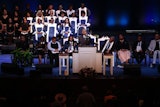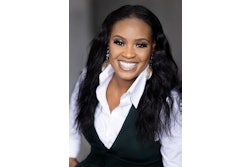EUGENE Ore. – On a summer afternoon in Eugene on Sunday, four dozen teenagers were cooped up in a windowless classroom somewhere in the bowels of the University of Oregon’s Knight Library, listening to a lecture on be still my beating heart! using libraries.
And yet they couldn’t have been happier.
“This is my second year here,” said Cesar Landrum, a 15-year-old sophomore-to-be at Sheldon High School. “I think it’s fun to come do this, live in the dorms, study together. Last year we learned about financial planning for college.”
He’d better plan. He wants to go to The Juilliard School in New York City and study acting.
And, no, this is not an assembly of teenage geeks.
Instead, Sunday marked the first day of 2011’s Oregon Young Scholars Program, a weeklong residential program for “historically underrepresented” high-school-age students from a targeted group of schools in the Portland and Eugene areas. The program was created six years ago by Carla Gary, who is assistant vice president for institutional equity and diversity at the University of Oregon and a passionate advocate for drawing talented students of color into the university.
The idea, Gary said, is to take high school students who might not come from a college-oriented background children of first-generation immigrants, say, or children of parents who never attended college and give them the skills and comfort level to help them find and navigate a good university education. And that means starting young.
“The time to talk to students about college is not in high school,” Gary said firmly. “It’s before that.”
The young scholars program got its start back in the days of federal funding through No Child Left Behind, Gary said. That first year, after her boss said she had a week to draw up a grant proposal, Gary not only got funding but instantly recruited 16 students from the Eugene and Portland areas to come to the university, live for a week in a dormitory and spend time in groups she calls “cohorts” dedicated to such topics as business, finance, urban planning and the arts.
In one project, for example, students mapped affluent and less affluent neighborhoods in Portland and talked about access to such things as healthy food in each neighborhood.
This summer’s class itinerary includes a Wednesday night dinner with local business leaders.
“This program really encourages you to do your best in school,” said Diana Rodriguez, a 17-year-old senior at Churchill High School, who is back for her fourth summer. Last year she studied in an art group, creating a small book about dance in the process.
Taking part for four consecutive summers has helped her clarify her career goals, Diana said. “What I really want to do is integrate the performing arts,” she explained. “I probably want to be a dance teacher. You know, when you integrate teaching with performance, people learn much better.”
Evan Turner was one of 16 students who went through the program in its first year. He continued each year in high school and is back this year as a resident adviser in the program’s dormitory.
It was his mother who first heard about the program, he said. “I didn’t want to come. I wanted to enjoy my summer.”
Looking back, Turner said, his mom was right.
“This prepared me for college,” he said. “Everything they told me didn’t hit me right then. But when I got to college I remembered what I should be doing.”
Turner will be a junior next year at Eastern Illinois University, where he is studying elementary education. “I’d like to see this become a national thing, not just at the university but everywhere,” he added.
The program, with a budget of about $70,000 for this year, is now largely funded by donations from individual donors as well as a grant from a private foundation that prefers to remain anonymous, Gary said.
Admission is selective; students are admitted only in the summer before their high school freshman year and have the option so long as they keep their school work up and satisfy other requirements, such as performing community service during the year of returning each summer for three more years. Parents are required to participate.
This year’s class of 51 includes 23 entering freshmen, who were drawn from about 60 applicants.
Gary likes to talk about breaking down the “traditional paradigm” of higher education. In the old model, she said, colleges and universities sit back and wait for students to apply. In her vision, colleges reach out to talented students who might not otherwise consider higher education.
“This is the responsibility of higher education,” she said, looking around the room of engaged young faces. “I want students here at the university who know how to cross cultures and build bridges.”


















